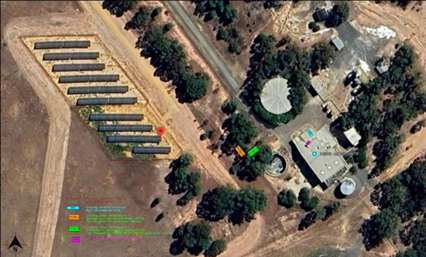- key features
- Specifications
- FAQS
The L233C delivers efficient solar integration, smart monitoring, reliable backup, liquid cooling and scalable design.
- An intelligent liquid cooling system keeps the battery cell’s temperature deviation within 3℃, battery cell lifetime by 20%
- Highly integrated (Energy Storage System (ESS) for easy transportation and O&M
- The integrated design enables quick site installation
- A four-level management structure that provides accurate protection against short circuits, overcurrent, overvoltage, undervoltage, and overtemperature
- A modular and scalable design ideal for diverse applications.
.
- Dimensions (L*W*H): 1400mm x 1350mm x 2100mm
- Weight: ~2700kg
- Battery Rated Capacity: 233 kWh
- Max AC power: 50KW, 100KW
- Protection level: IP55
How much ground space is required?
The base dimensions of the L233C BESS are 1400mm x 1350mm x 2100mm.
What type of support does eLumina offer for EV charging installation?
eLumina provides comprehensive support, including site analysis, electrical planning, site planning, product matching, and the final delivery of a ready-to-use charging station. Additionally, we offer reliable after-sales support and maintenance services.
How can eLumina’s products contribute to cost savings for businesses?
With our battery technology, we implement an automatic charging strategy during low electricity prices, storing energy for later use when prices are higher. This allows customers to use power at the lowest price and achieve cost savings.
How does eLumina ensure reliability in its energy management solutions?
eLumina ensures reliability in energy management through robust data analysis capabilities and demonstrated extensive experience in the field.
What data and information are accessible for owners or site hosts from eLumina?
On eCSM, site hosts can easily manage and optimise operations. They can remotely control the chargers and utilise data intelligence to support decision-making. Data collection includes an overview of the daily and monthly number of orders, GMV, average charge amount, sales chart, activeness chart, each charger’s performance, traffic analysis, fault records, order type analysis (reserve, refund, abnormal), member information, etc.



